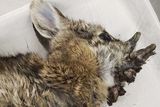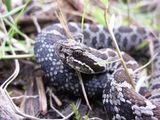Now Reading: Virus Outbreaks Spark Unusual Mutations in Rabbits and Squirrels: Key Facts
-
01
Virus Outbreaks Spark Unusual Mutations in Rabbits and Squirrels: Key Facts
Virus Outbreaks Spark Unusual Mutations in Rabbits and Squirrels: Key Facts

Rapid Summary
- Unusual Animal Diseases: Reports from North America describe rabbits wiht horn-like growths in Colorado and squirrels with pus-filled lesions and bald patches in Eastern Canada and Maine.
- Causes:
– Rabbits are infected with shope papilloma virus, which leads to keratinous growths resembling horns.This virus is transmitted via arthropods like ticks.- Squirrels suffer from squirrel fibromatosis (squirrel pox),caused by mosquito and flea bites or contact with infected squirrels,resulting in lesions near the bite area.
- Human Impact: Officials confirm these diseases pose no danger to humans but can emotionally affect those encountering sick animals.
- Wildlife Risks:
– Animals may face starvation or increased susceptibility to predators if the growths obstruct eating or breathing.
– Other wildlife species like deer and birds are susceptible to similar proliferative viral diseases.
Indian Opinion Analysis
India’s ecosystems host a diverse range of wildlife, making understanding such viral infections among fauna important for conservation efforts domestically. While these particular viruses do not affect humans directly, they highlight broader questions about zoonotic diseases’ management across the globe-seen notably during recent global health crises like COVID-19.
For India, where human-wildlife interaction is common due to encroachment into natural habitats or festivals celebrating wildlife, ensuring awareness regarding safe practices such as avoiding direct contact becomes critical for ecological balance and public health safety.
These North American cases further underline the need for disease monitoring systems within India’s own rich biodiversity framework that can mitigate risks for endangered domestic animal species without disrupting their populations unnecessarily-a priority emphasized by India’s growing stewardship role at international conservation platforms.

























